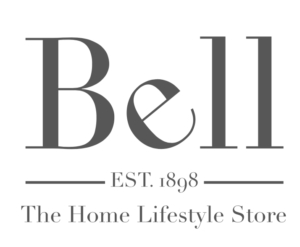5 ways a small business can generate pr

Quite often when I get talking to owners of small businesses, they think that PR is not for them. They either confuse the concept with advertising and dismiss it completely, rule it out as they think it will be too expensive, or think that PR is a luxury that only big brands and large corporates can afford.
Like marketing and advertising, small businesses that want to engage in PR need to think about who they are targeting. Once they have established this, they need to think about the newspapers, magazines, blogs and websites they might read. When you have a list of target media, this is when the fun can start.
Have a read of those sites and publications. Take a detailed look at their writing style. What stories have they included about other businesses? For example, some magazines and websites such as Entrepreneur Magazine prefer tips pieces, opinion articles and experience stories, so sending them a press release about a new appointment in your business simply won’t work. Trade journals on the other hand often welcome news of new products launching in their sector.
Here are our Top 5 Ways A Small Business Can Generate PR:
- Research and planning
Like you would with any other activity, take time to plan your PR. Either employ a consultant or agency to do this for you or do it yourself. Put together a wish list of your ideal media outlets and then plan what you are going to send them and when. Some magazines will have Forward Features lists. Check these out and make a note of any features relevant to your business and the deadline date for editorial submissions. Chances are a well written piece that fits a feature an Editor is scratching their head to fill will be greatly appreciated. Consider creating a media/editorial calendar so you don’t miss any opportunities (most PR agencies will do this for you if you don’t have the time). - Create good quality content
I have noticed that many business owners seem to fall into one of two categories – those that ‘don’t have any news’ and those who think that because something is a big deal to them, the national newspapers will want to know all about it. Chances are you fall somewhere in between. Identify what is currently going on at your business that could be newsworthy – moving to a larger facility, job creation, a partnership with another company, an upcoming event etc. Once you have decided on your news story, go back to point number 1 above and think about the media that would be interested in this story and write a press release or article that would ‘fit’. Employ a professional if you are unsure of your writing capabilities. Good quality photography is also important. Supplying a relevant, high resolution photo to go with your submission can make all the difference when an Editor is choosing which stories to include. It can also guarantee you a larger spread if the photo can be used large on the page without distorting or looking pixelated. A phone photo should suffice but only if it is in focus, no filters applied and the file size is at least 1MB. Having said that, if funds permit, I would always recommend getting a professional in. Again, planning is key. Get a photographer in for a half day and get them to do corporate portraits for your website, some exterior shots of your building, some product shots and then an appropriate shot for your press release. This way you could build up a bank of press photography that you can keep on returning to time and time again for your website, email newsletters, social media, brochures and more, making it well worth the investment. - Be reactive
Whilst planning PR activity is great when it comes to things like product launches or just general brand awareness and aligning yourself with certain topics, some PR cannot be planned for. For example, winning a new contract or reacting to something in the national press like a landmark court case or Government announcement. At times like this, speed is of the essence and you need to turn things around quickly (reactive). Ensure you have the systems and processes in place for quickly creating an article or statement and the subsequent approval. It can’t sit on the MD’s desk for three days awaiting his approval as the story will be old news by then. - Use the free tools available to you
This may seem like any obvious one but if you are writing a press release to send out to the press, publish this on your own website and share it on social media. Publish the release as an article on LinkedIn and think about if you have any member profiles on any websites. Quite often, these will let you publish news stories as part of your membership fee. Not only will this increase the chances of your release being seen, it will also help with any Search Engine Optimization (SEO) efforts. - Use PR to create PR
Once you have secured any coverage, shout about it! Share links to articles on your website and social media, take copies of magazines out to meetings and show potential clients, perhaps frame articles and put them in your reception area or above your desk. People will see these and immediately assume that you are PR savvy, must be good at what you do and will see you as an expert in that particular field if you keep sharing articles of you talking about a specific subject.
Emma Speirs of Ballyhoo PR specialises in working with small to medium-sized businesses. If all of the above seems too much like hard work, call 01536 682800 or email info@ballyhoo-pr.co.uk and see how we can work with you to generate some press coverage for your business.
Latest Articles
Newsjacking: what is it and how do you do it?
When most people think of PR, they think of the distribution of carefully crafted press releases and statements pushed ...
PR acronyms and jargon – what do they all mean?!
Like many of us, I know my own industry inside out and, as a result, sometimes assume that everyone ...
My first month at ballyhoo pr
It has been almost a month since I started working at Ballyhoo PR and during this short time, I ...
Does networking count as pr?
I remember thinking to myself when I first started working at Ballyhoo PR, what would my favourite part about ...
5 things for a small business to consider before hiring a pr agency or consultant
You are a small business and you have heard great things about PR and how it can raise awareness ...












